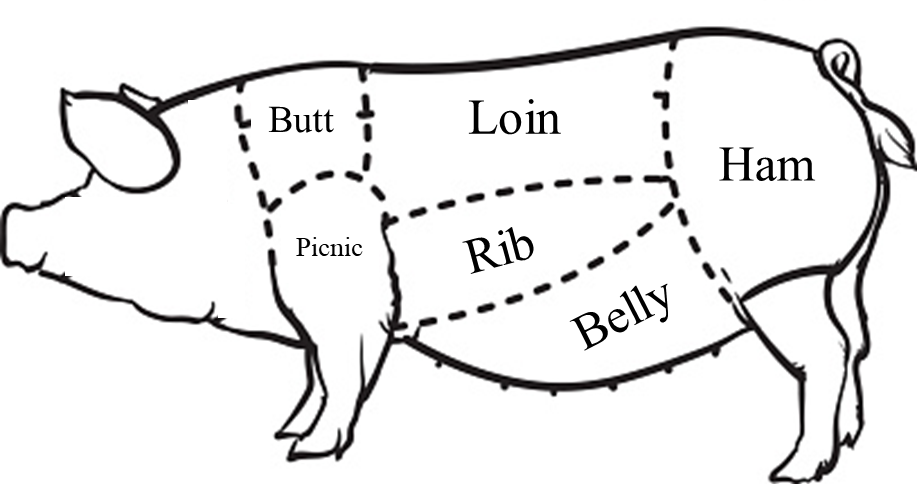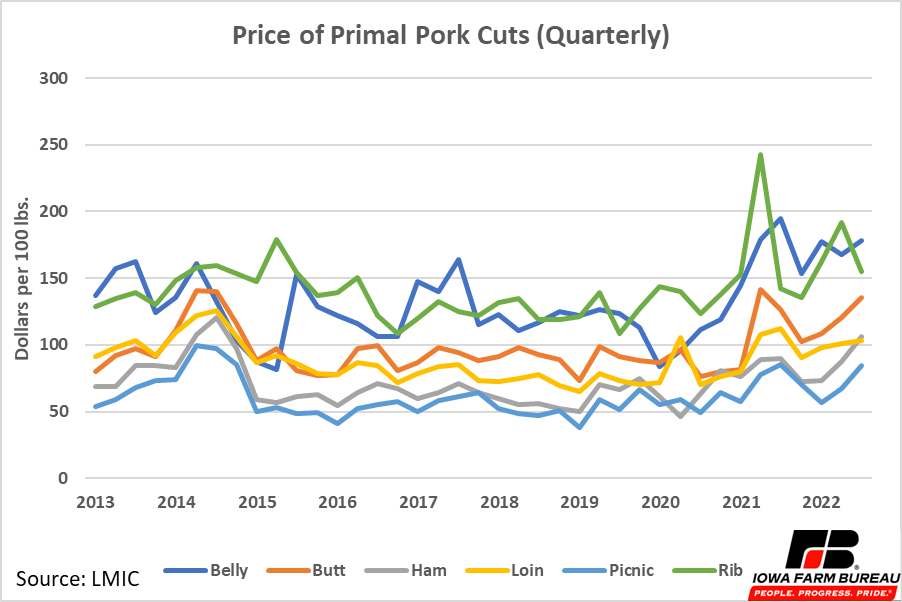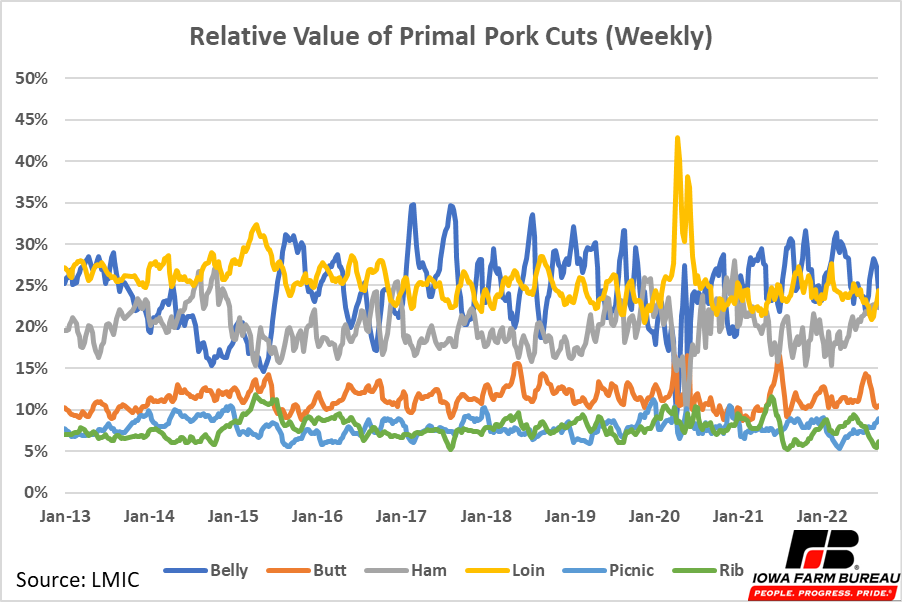Pork Cutout Values
Author
Published
9/29/2022
This article outlines the relative value of major primal pork cuts. Figure 1 provides an outline of the major primal cuts.

Figure 1. Primal Pork Cuts Diagram
The price of each primal cut of pork is shown in Figure 2. The belly and rib are typically the most valuable cuts on a per pound basis. The belly is primarily used to make bacon, which has become a popular and valuable cut. The rib has also historically been a valuable cut on a per pound basis.

Figure 2. Price of Primal Pork Cuts (Quarterly)
The percent of the total cutout each primal cut makes up is shown in the second column of Table 1. These percentages do not add to 100% as there a few other small primal cuts (neck, jowl, feet) not included here. Using these weights and the price of each cut, the relative value of each primal cut is calculated. The most recent values are listed in the third column of Table 1 and historical relative values of each cut are shown in Figure 3.
The belly, loin, and ham are the major drivers of the value of hogs, making up close to 75% of the total cutout value. Typically, the belly or the loin is the most valuable primal cut. The belly also has the most volatile price of all the primal cuts. The volatility and relatively high value of the belly make it an important cut to monitor.
In the most recent week, the relative value of ham exceeded the belly and the loin. This is a little unusual as the ham typically is the third most valuable cut, floating between 20-25% of the value of the total cutout. The ham occasionally jumps to the second most valuable cut and rarely jumps to the most valuable cut, though it has happened before.
Large swings in the relative value of cuts occurred in 2020 due to the COVID-19 pandemic, especially in April and May near the beginning of the pandemic. In early April 2020, the value of all primal cuts except the loin, decreased. This was likely due to decreased quantity demanded for these products as the country shutdown including many restaurants and institutional food service places such as schools and corporate cafeterias.
The value of all primal cuts quickly bounced back by the end of the April 2020. The pandemic forced some packers to reduce throughput and other to temporarily shut down, causing packing costs to rise and reducing the supply of available pork. This moved retail pork prices higher.
The loin experienced the largest gain, briefly making up over 40% of the value of the cutout. The loin’s gain in relative value was primarily at the expense of the ham. The ham saw a relatively small increase in price and lost value relative to other cuts as a result in the early months of the pandemic. By July 2020, the large swings for the most part ended, and the relative value of the cuts returned to their typical relationships.
Table 1. Relative Weight and Value of Primal Pork Cuts


Figure 3. Relative Value of Primal Pork Cuts (Weekly)
Economic analysis provided by Aaron Gerdts, Research Analyst, Decision Innovation Solutions on behalf of Iowa Farm Bureau.
Want more news on this topic? Farm Bureau members may subscribe for a free email news service, featuring the farm and rural topics that interest them most!